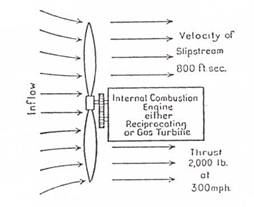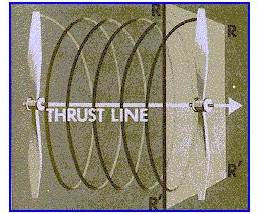





Published on Feb 14, 2025
A heavier than air flying machine, supported by aerofoils, designed to obtain, when driven through the air at an angle inclined to the direction of motion, a reaction from the air approximately at right angle to their surfaces is known as aeroplane.
The various forces which acts on the aeroplane when it travels through the air are lift force, drag force, thrust force and its own weight. For steady condition the weight should be balanced by the lift and drag by thrust. The lift is obtained due to the special shape of wings and thrust is obtained by propulsion systems.
"All man made contrivances which fly, that is to say which are kept in the air by forces produced by the air are called aircraft".
Eg: balloons, kites, aeroplanes etc.
There are two kinds of air crafts, those which are lighter than air and those which heavier than air. The lighter than means their weight by volume is less than that of air. Heavier than means the weight by volume is heavier than that of air. The former includes balloons, airships etc. and the later comprises kites and aero planes.
"A heavier than air flying machine supported by airfoils , designed to obtain, when driven through the air at an angle inclined to the direction of motion, a reaction from the air approximately at right angles to their surfaces".
Weight is a force that is always directed toward the center of the earth. The magnitude of this force depends on the mass of all of the parts of the airplane itself, plus the amount of fuel, plus any payload on board (people, baggage, freight, ...).The weight is distributed throughout the airplane. But we can often think of it as collected and acting through a single point called the center of gravity. In flight, the airplane rotates about the center of gravity, but the direction of the weight force always remains toward the center of the earth. During a flight, the airplane's weight constantly changes as the aircraft consumes fuel.
To make an airplane fly, we must generate a force to overcome the weight. This force is called the lift and is generated by the motion of the airplane through the air. Lift is an aerodynamic force ("aero" stands for the air, and "dynamic" denotes motion). Lift is directed perpendicular (at right angle) to the flight direction. As with weight, each part of the aircraft contributes to a single aircraft lift force. But most aircraft lift is generated by the wings. Aircraft lift acts through a single point called the center of pressure. The center of pressure is defined just like the center of gravity, but using the pressure distribution around the body instead of the weight distribution.
As the airplane moves through the air, there is another aerodynamic force present. The air resists the motion of the aircraft; this resistance force is called the drag of the airplane. Like lift, there are many factors that affect the magnitude of the drag force including:
" shape of the airplane
" "stickiness" of the air
" speed of the aircraft
The three principal propulsion systems in aeroplanes are:
1. Propeller Propulsion
2. Jet Propulsion
3. Rocket Propulsion

Figure 2
A piston engine requires a propeller to convert the power output of the engine in to thrust. The power is developed by the piston engine, and is transmitted to the propeller, via a shaft, as engine torque or turning effect. This is used to rotate the propeller, which converts most of the turning effect in to a pull or push force, called thrust. The propeller does this by generating forces which result from its motion through air.
The propeller pulls the aeroplane through the air by generating a basically ‘lift’force which we call thrust.
The propeller blade is so fitted that its curved face is always at the front side of the plane. Thus the propeller blade causes the air to flow so that the static pressure ahead of the blade is less than that behind the blade. The result is a forward thrust force on the propeller blade which pulls the aeroplane along.
When the aeroplane is moving forward, the propeller will have two different motions.
1. Forward motion
2. Rotational motion

Figure 3
Thus each propeller blade section follows a corkscrew path through the air, called a helix. Hence the propeller can also be called an air screw.
Any means of propulsion which depends on throwing the air backwards is really a form of jet propulsion, and in that sense all power driven aeroplanes are jet propelled. But by common usage the term jet propulsion has come to be applied only to those forms in which there is external propeller.
Before studying the various types of jet propulsion, it is well to become familiar with the reasons why such devices operate to produce the thrust.
The theory of jet propulsion may be considered the reaction of mass when its velocity is changed.
The term “mass” is similar to “weight” but it is actually a different quantity. Mass refers to the quantity of matter, while weight refers to the pull of gravity on that matter.
Newton’s laws of motion relating to jet thrust may be stated as follows.
It states that the rate of change of momentum in any direction is proportional to the force acting in that direction.
It states that for every action there is an equal and opposite reaction.
Any analogy that may be applied to explain the above principles is the recoil of a pistol.Pistol recoils in accordance with Newton’s Laws. It is interesting to note that whether a piston is fired through water, through ordinary atmosphere, or through a vacuum the recoil is the same in all cases. Still another fact that should be noted is that the thrust is equal against the bullet and the pistol. Figs. given below shows how the recoil of a pistol may be compared to the propulsion of a jet engine.

Figure 21
Rocket propulsion differs from both jet and propeller propulsion in the one important respect that “the things that are thrown backwards” are carried in the rocket itself; in other words, we do not relay on the surrounding air to provide the jet. This fact points immediately to the inherent disadvantage of the rocket system, that “it would need an awful big store”. In practice it is just impossible to provide the storage or to carry the weight that would be required for a flight of any reasonable duration, and so rockets may be considered as boosts for other forms of propulsion, to be used only in special circumstances, or for flights the duration of which is measured in minutes and seconds rather than in hours.
Rocket propulsion is simply a development of the work type of rocket with which every one is familiar. The fuel or fuels are carried in the “engine” which is nothing more nor less than a suitable chamber, when they are ignited, or may be simply omitted, they burn furiously and the products of combustion, gases and so on, are ejected by the pressure produced at high speed through a suitable nozzle. Many different kinds of fuel can be used, solids, liquids, and gases and the system may even lend itself eventually to the use of atomic power.
It is usually used in the case of missiles, satellites and space ships.
| Are you interested in this topic.Then mail to us immediately to get the full report.
email :- contactv2@gmail.com |